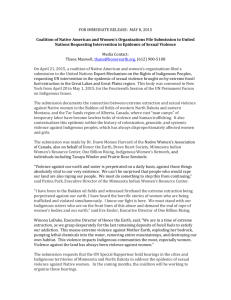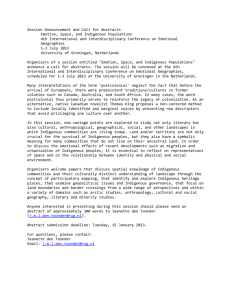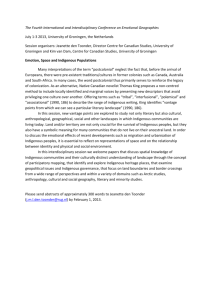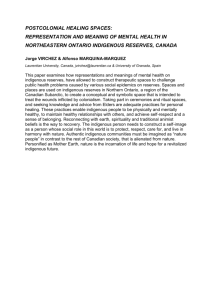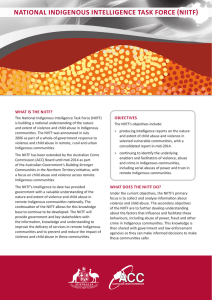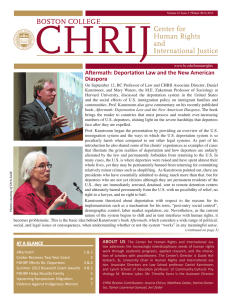Violent Terrains: Black and Indigenous Legal
advertisement
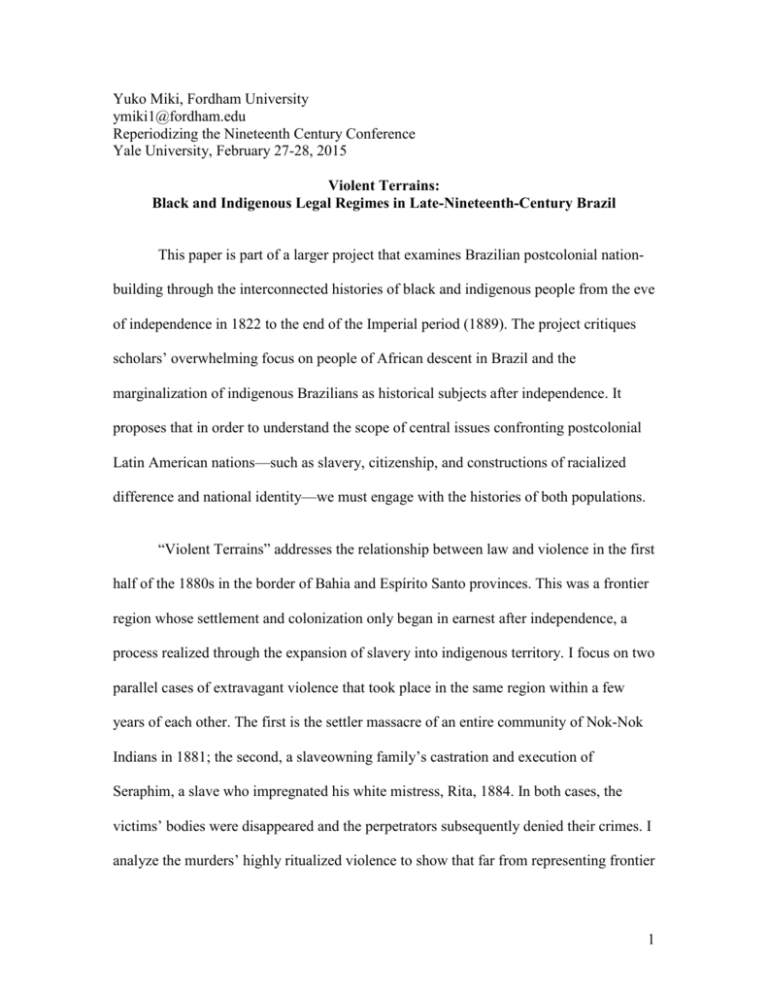
Yuko Miki, Fordham University ymiki1@fordham.edu Reperiodizing the Nineteenth Century Conference Yale University, February 27-28, 2015 Violent Terrains: Black and Indigenous Legal Regimes in Late-Nineteenth-Century Brazil This paper is part of a larger project that examines Brazilian postcolonial nationbuilding through the interconnected histories of black and indigenous people from the eve of independence in 1822 to the end of the Imperial period (1889). The project critiques scholars’ overwhelming focus on people of African descent in Brazil and the marginalization of indigenous Brazilians as historical subjects after independence. It proposes that in order to understand the scope of central issues confronting postcolonial Latin American nations—such as slavery, citizenship, and constructions of racialized difference and national identity—we must engage with the histories of both populations. “Violent Terrains” addresses the relationship between law and violence in the first half of the 1880s in the border of Bahia and Espírito Santo provinces. This was a frontier region whose settlement and colonization only began in earnest after independence, a process realized through the expansion of slavery into indigenous territory. I focus on two parallel cases of extravagant violence that took place in the same region within a few years of each other. The first is the settler massacre of an entire community of Nok-Nok Indians in 1881; the second, a slaveowning family’s castration and execution of Seraphim, a slave who impregnated his white mistress, Rita, 1884. In both cases, the victims’ bodies were disappeared and the perpetrators subsequently denied their crimes. I analyze the murders’ highly ritualized violence to show that far from representing frontier 1 anarchy, these acts embodied the perpetrators’ ideas about legitimate violence and power and reveal the presence of the state in frontier regions. The Nok-Nok massacre followed a historically specific practice known as matar uma aldeia (settler massacres of entire indigenous villages, with the aid of indigenous guides), which settlers blamed on Indian “savagery” in order to legitimize their own violence. In the example studied here, flagrant judicial misconduct allowed the massacre to be denied all together and the killers acquitted because “no Indian bodies were found.” The slave Seraphim’s tragic end echoed the numerous examples of gendered punishment and executions of slaves throughout the Americas. Yet what distinguished his death was its clandestine nature. Instead of a creating a public spectacle of violence to affirm masters’ state-sanctioned power over their slaves, Seraphim’s executioners disposed of his body in secrecy and denied any knowledge, and were subsequently condemned by the public and law enforcement for their brutality. This paper argues that the outcome of these two cases, although equally violent, reveals the diverging legal regimes governing indigenous and enslaved black Brazilians in the later nineteenth century. For Indians, who were de jure Brazilian citizens, the state’s presence manifested itself in the blurring of legal and extralegal authority that effectively placed them outside legal protection and abrogated their citizenship. For slaves, the state increasingly intervened in, instead of abetted, masters’ private violence against them in an era of growing anti-slavery agitation across Brazil. If such developments created further openings for slaves to claim their right to citizenship, we must also recognize that that same right was increasingly denied to indigenous Brazilians. 2



